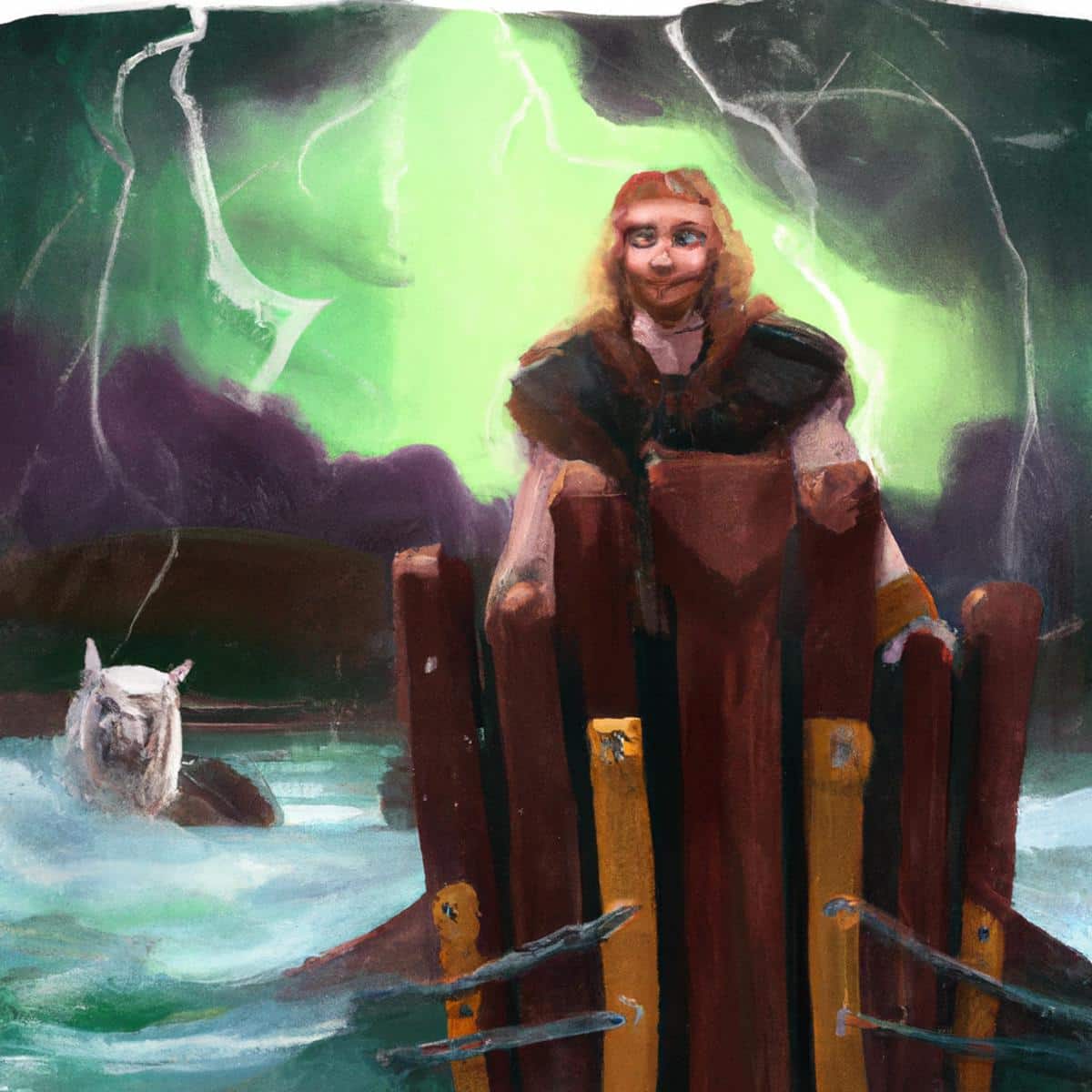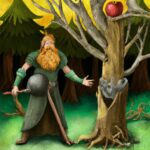
Loki's Punishment is a two-player board game set in Norse mythology. The object of the game is to be the first to conquer the nine kingdoms of Midgard. Players take on the role of Norse gods and use their powers to recruit heroes, build fortresses, and fight each other's armies.
Each player starts with a personal board containing six cards, each representing a different Norse god. These cards have unique abilities that players can use to their advantage during the game. Players are also given a limited amount of resources that they can use to recruit heroes, build fortresses, and fight each other's armies.
During the game, players take turns moving their armies across Midgard and conquering kingdoms as the game progresses. Every time a kingdom is conquered, the winner gets additional points and resources to help them continue their military campaign until final victory is achieved. At the same time, they must fend off the enemy forces as they try to spread their influence throughout Midgard before their opponent does first.
In summary, Loki's Punishment is a fun strategic game with narrative elements based on Norse mythology that will keep you entertained for hours as you try to be the first to conquer the Nine Realms of Midgard before your opponent does first.
Summary
In Norse mythology, Loki is a god of mischief and deceit. He is considered one of the main gods of the Norse Pantheon, although he is not exactly one of the Aesir (the main gods). He is known for his cunning and ability to deceive other gods and mortals. However, he is also known for his misbehavior, which eventually resulted in him being punished.
Loki was punished for his malicious and reckless actions on several occasions during Norse mythology. On one occasion he was chained with live snakeskins that dripped poison over him until he drowned. On another occasion he was chained to three rocks at the bottom of the sea where he remained trapped until Ragnarok (the end of the world). These are just some of the ways Loki was punished for his inappropriate actions.
In addition to these physical punishments, Loki also had to deal with the contempt and distrust of the other gods due to his reckless actions. This meant that he was excluded from important meetings among the Aseir and did not receive invitations to sacred events such as Yule (the most important pagan celebration). As a result, Loki was forced to spend a lot of time alone with no close friends or family to support him during this difficult time.
Although the punishment for Loki may seem cruel and unjustifiable, there are some important lessons to take note of: we should never act impulsively without thinking about the consequences; we must be aware of the potential damage we can cause; and we must treat our fellow human beings with respect if we are to avoid future problems.
Main characters
In Norse mythology, Loki's Punishment is a story that describes the sufferings that the god Loki had to endure as punishment for his actions. According to legend, Loki was a cunning and mischievous god known for his tendency to lie and deceive others. These actions deeply displeased the other gods, who decided to punish him.
The gods gathered some of the most powerful tools to create a prison for Loki. This prison was made of ice and was built in the depths of the sea. The gods bound Loki with chains made from the beard of the giant Narfi and locked him in this prison forever.
Loki was sentenced to spend the rest of his days bound in chains made of cold, unchanging ice, with no chance of escape or freedom. As if this were not enough, the gods also decided to place a huge monstrous being next to the place where Loki was chained: a huge dragon named Nidhogg sat on it every day to prevent any escape attempt by the mischievous God.
The punishment imposed on Loki is remembered as a classic example of how deceit and lies are not tolerated among the Norse Gods; It also serves as a warning to those who seek to use cunning or deceit to get what they want regardless of the negative consequences that may follow.
intervening gods
Loki's punishment is an important part of Norse mythology and Viking culture. In Norse mythology, Loki is the god of deceit and chaos, known for his cunning and ability to manipulate others. However, his actions led to the other gods punishing him severely.
According to legend, after many mischievous antics, the gods decided it was time to punish Loki for his deeds. The main person responsible for the punishment was Odin, the father of all the Norse gods. He first ordered Loki to be bound with snakeskins to the Gjöll rock at the bottom of the Hvergelmir pit. They then placed a huge stone over his head to hold him immobilized while a poisonous snake hung over him and dripped poison into his face. This caused Loki to experience excruciating pain whenever he tried to move or speak.
But this was not all: Odin also ordered Skadi (the Viking goddess of mountains) to bind her hands with chains made of human bones and put a ring on each finger to prevent her from escaping. At the same time, Freya (the Viking goddess of love) forced two giants named Leipnir and Narfi to become wolves and try to devour him alive; however, this was not possible due to the fact that human bones were too strong to easily break or come apart.
Finally, after a long time being tortured like this by the other Norse gods, Loki finally managed to escape thanks to the voluntary sacrifice made by his stepson Sigyn who stayed with him during all this time holding a bowl under the poisonous snake to collect the poison before to fall on him; however, she had to go out regularly to empty the bowl which allowed the poison to fall on him causing him excruciating pain to this day as part of the punishment imposed by Odin and the other Norse gods as a direct consequence of his past evil deeds.
Main topics covered
Loki's Punishment is one of the best known and most fascinating stories in Norse mythology. This narrative describes how the Norse gods punished Loki, the god of deceit, for his mischief. This story has been told for centuries throughout Scandinavia and has inspired many literary works, films, and television series.
The story begins when the gods decide to build a hall to celebrate their power and glory. To build it they need the help of a giant named Hrimthursar, who agrees to help them in exchange for Freya's hand in marriage. The gods reject this offer and Loki steps in to offer himself as guarantor of the deal between the two. The giant agrees to this but demands that the hall be finished in three days or he will take something precious as compensation.
Loki can't meet this deadline so he decides to trick the giant into thinking the room is finished when it really isn't. The giant falls into the trap and leaves without receiving anything in return for his work. The gods discover Loki's deception and immediately decide to punish him for his betrayal.
First they chain him with chains made by the giants themselves using cast iron, poison, and magical thread to prevent him from escaping or use their magical powers to break free. They then place a huge dragon on top of him to prevent him from escaping underground or into the sea like he used to before; they eventually place a huge boulder over him to keep him trapped underground until the end of the world, at which point he would be freed by Thor to fight the monsters during Ragnarok (the end of the world).
This is the traditional narrative about the punishment inflicted on Loki by the Norse gods; however, there are many different versions depending on the cultural or geographical context from which this ancient story is told; but they all coincide in highlighting the cunning and ingenuity of the main character: Loki, who always manages to circumvent the rules imposed by other characters stronger than him thanks to his superior intelligence and inexhaustible creativity.



